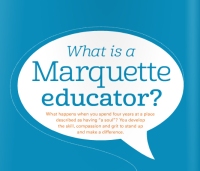 By Peggy Wuenstel — I have posted before about my recent career change to reading intervention.
By Peggy Wuenstel — I have posted before about my recent career change to reading intervention.
After more than a full year under my belt I am reviewing some of the key moments and lessons I have learned. I also have a few new challenges to meet and skills to refine. That is what this change of direction has created , a new mission to guide students in growing in both their skills and love of reading.
In my final practicum experience I was privileged to work with a young man who had suffered a severe brain injury in an automobile accident eight years before. While we worked on his reading accuracy, use of appropriate strategies, and building his confidence, I realized that I had to do more to make this meaningful for him. He was the typical high school sophomore, interested in girls, sports, working out, and hanging out with friends. He was also unique in his love of farming and certainty about his career path in joining the family farm business. We read farm journals together, and his reading for enjoyment grew exponentially. He also discovered that texting suited his challenged spelling skills. His confidence in being able to make himself understood led to a wonderful e-mail from his mom who was delighted that her son was now texting her independently.
My takeaway: Make it real for your students and reading will become a student priority.
It is easy to get overly focused on creating accuracy, comprehension, and fluency in emerging readers. Those are the things that are easy to measure, that we are held accountable for in district goal setting and common core standards. If our intent is to create lifelong readers we must not forget our responsibilities to also build confidence and motivation to read. That has been the biggest change in my approach to my students in this school year. We read to learn, to laugh, to share. Decoding, remembering and applying strategies are the way we get there, not the destination. My takeaway here: Teach me how, but remember why I want to read.
Raising readers has to begin early. Research conducted by Dr. Pia Rebello Britto of Yale University looked at the interactions of teen moms and their children. Children of storytellers perform better than children of story readers. The difference is the orientation to have a conversation, an interaction about the shared reading experience. We need to encourage parents and students to add what they think, predict what may happen next, and connect to what they have read before. We need to teach kids to that book characters can be friends, and should be frequent visitors, companions for a whole life. This extends thinking, builds vocabulary, encourages creativity, and adds miles on the page. My takeaway: get readers to make friends with books early, often, and widely.
We know that the minutes we can spend reading during the school day are not enough to ensure strong reading development. We need to make parents feel important and capable in this joint process. Encourage them to label and point to things in the story that interest, surprise, or anger them. This can happen at any age. We can over-emphasize accuracy and forget about meaning and fun. Parents need to know that it is okay to provide high levels of guided assistance. It is not only okay, it is great to fill in the words kids don’t know. At school it is our mission to link instruction to what child needs. At home, it can be to give kids what they need to be successful with a book and allowing them to enjoy it, such as giving clear verbal cues, filling in the background information that kids need to understand.
Get out the map, the dictionary, Google what you don’t know. A great way to think about reading instruction is to use a crossword puzzle analogy. Ask readers to do as much as they can, to try some things that may or may not work based on the information they do have. Assist them in looking up the answers for the remaining blanks. Nobody knows everything. Puzzles can be easy or hard. It helps when you know the words that get used over and over again, and reading and puzzles are so much more satisfying when the boxes are all filled.
My takeaway: Empower parents to help everyone have fun.
Literate communities should be a community concern. Be aware of what are things like in the community in which you teach. Where are improvements needed? What partnerships exist and which ones can be built? Get books into the hands of those who need them. Check out organizations, local and global that can provide resources. Start a book club, hold a literacy night. Partner with your local library. Check out programs like milkandbookies.org, wegivebooks.org and firstbooks.org for ideas. My takeaway: Build alliances, find partners, reach out and teach.
Lastly, use your adult voice. Keep reading aloud in school and at home. This falls off markedly in homes for kids after age 9. Older kids love to be read to. Cultivate your inner actor, impressionist, and comedian. Choose books at an appropriate reading/listening level. The goals here are understanding and enjoyment not advancement. Revisit old favorites, those books you want to hear again and again. Embrace the audiobook. My 6th grade granddaughter has asked for the Jim Dale narrations of the Harry Potter series for Christmas this year. You can bet they will be under our tree with her name on them.
My takeaway: Reading aloud is a gift we can and should share. Do it tonight.

0 Responses to “Raising Readers”